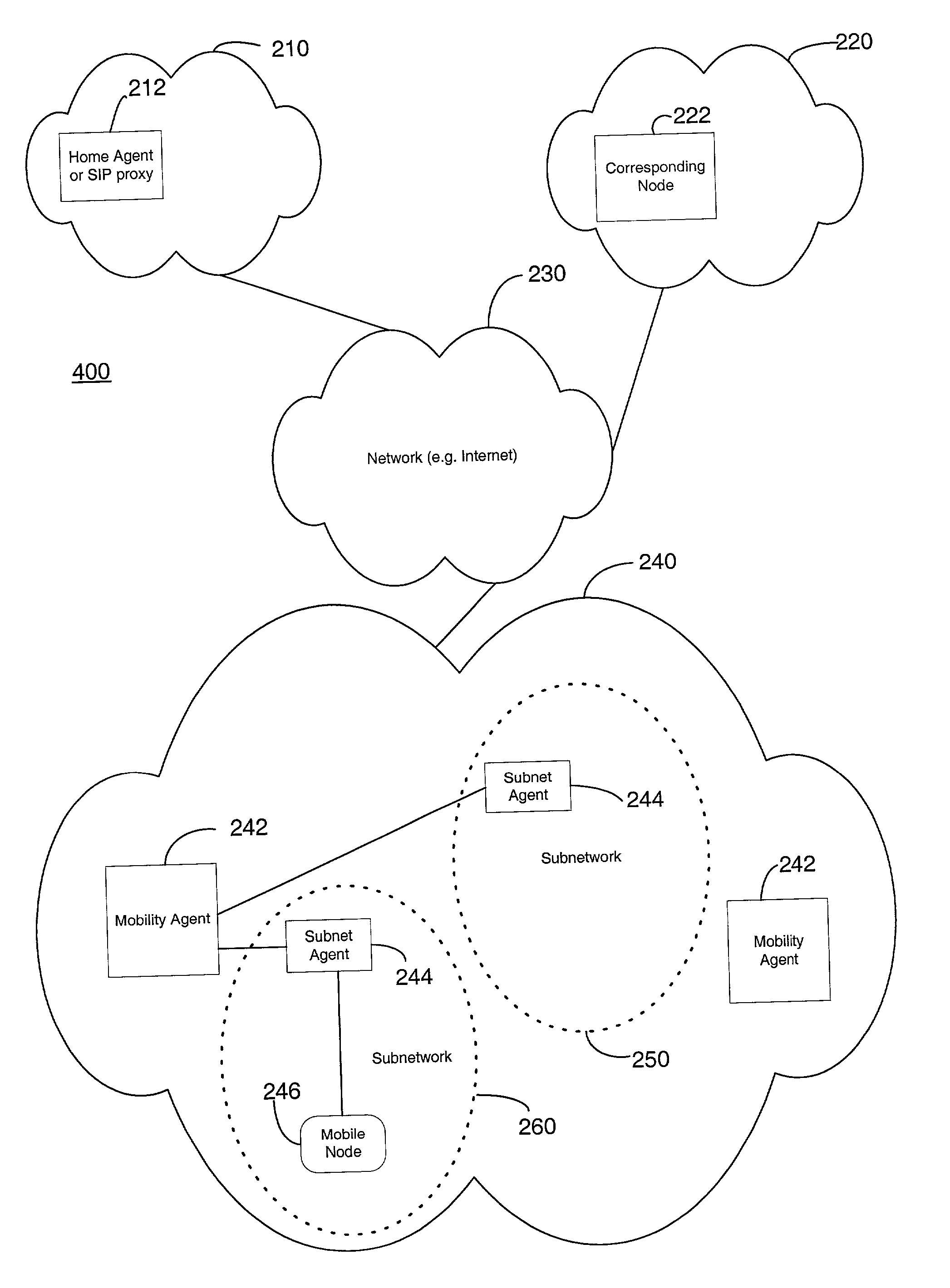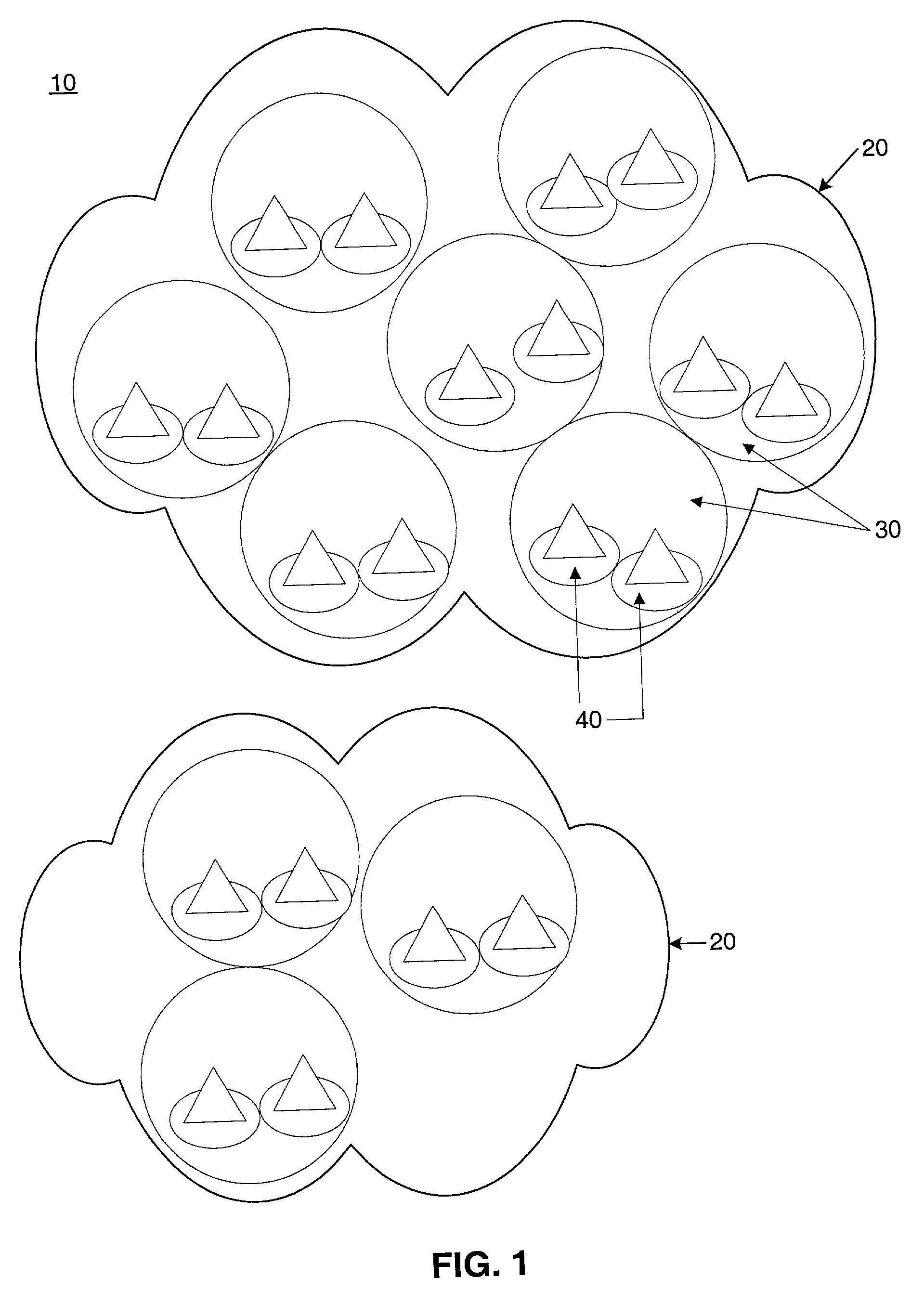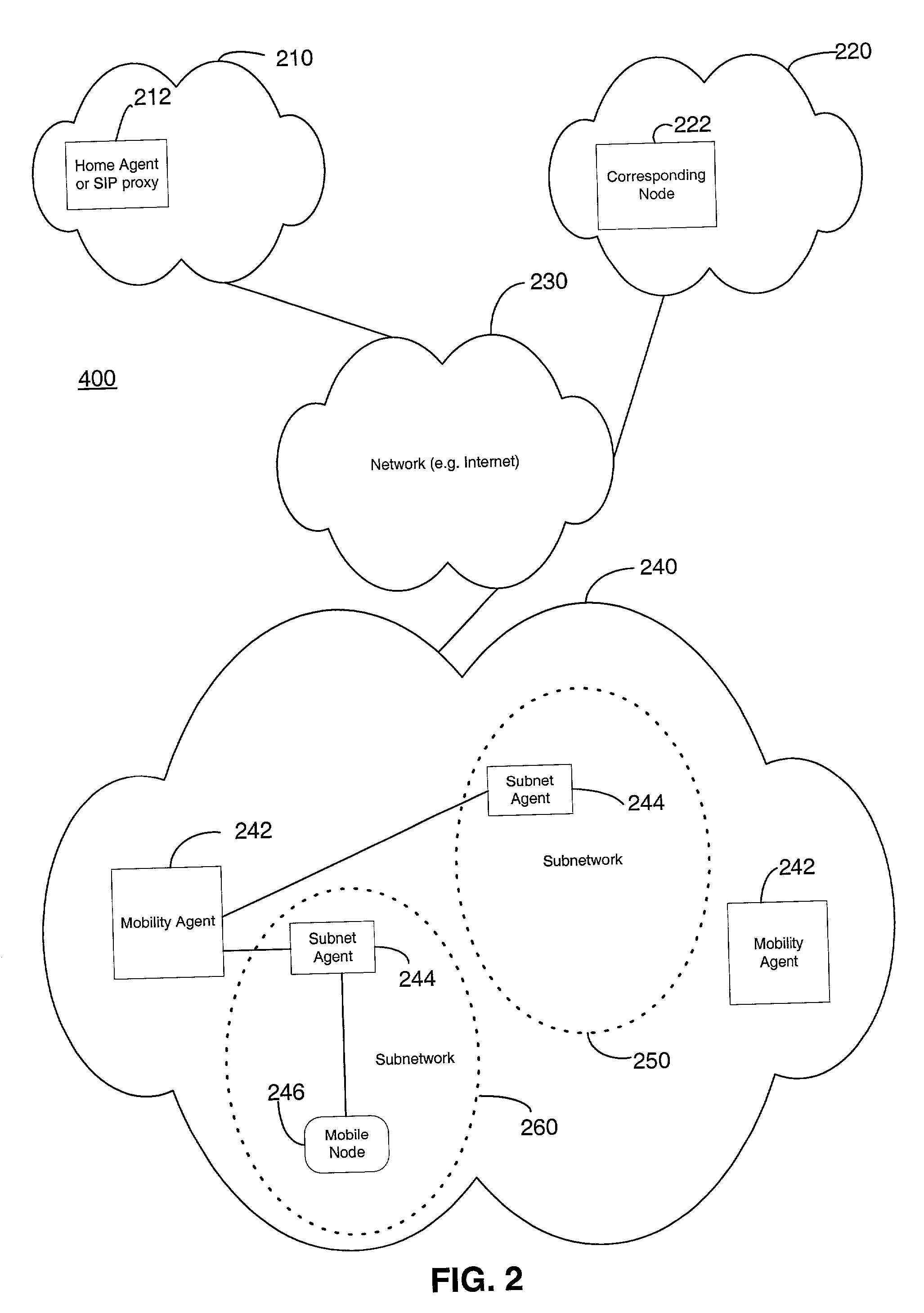Realizing commercially viable
Internet Protocol (IP) mobility support over the current cellular infrastructure, however, remains a challenge.
In particular, for real-time
multimedia (audio, video, and text) communications, user mobility poses several challenges.
However, it does not consider the integration of additional functions such as
authentication and billing, which are critical for successful adoption in commercial networks.
However, SIP mobility cannot support TCP connections and is also not suitable for micro- and
macro-mobility.
Though the
Mobile IP solution meets the goals of operational transparency and handoff support, it is not optimized for managing
macro-mobility (or intra-domain mobility) in commercial cellular networks.
In particular, a larger number of location update messages and the latency involved in communicating these update messages to remote nodes make
Mobile IP unsuitable for supporting real-time applications on
the Internet.
However, all of these solutions have limitations in dealing with intra-domain or
macro-mobility in the
telecommunications networks, and none is best suited for all services and applications.
While this form of
route-optimization will result in significant bandwidth savings by eliminating unnecessary path traversals, especially as the number of mobile nodes increases, it can give rise to significantly high latency during the location update process.
However, the transmission of binding updates directly to correspondent nodes can also result in a large update latency and can become a critical impediment to successfully supporting real-time applications.
Moreover, the deployment of IPv6 infrastructure is still a futuristic goal and is likely to involve a prolonged period of coexistence with the current IPv4 infrastructure.
However, these enhancements are still not particularly suitable for supporting intra-domain mobility in cellular
wireless networks.
Particularly, the enhancements lack support for fast
handoff control, real-time location update, registration and configuration.
Hence this is not compatible with the current cellular architectures, in which base stations are simply layer-2 forwarding agents.
Moreover, deploying a hierarchy of foreign agents brings with it complex operational and security issues (especially in a commercial multi-provider environment) and requires multiple
layers of
packet processing on the
data transport path.
The presence of multiple
layers of mobility-supporting agents also significantly increases the possibility of communication failure, as it does not
exploit the inherent robustness of
the Internet routing protocols.
Several IETF proposals have also explored the possibility of using hierarchical foreign agents for seamless mobility within
a domain but have not been actively pursued in the recent past.
The need for hierarchical agents in an Internet mobility architecture remains an open issue.
First, basic
Mobile IP has a long handoff
delay when a mobile node and its home agent or correspondent node are separated by many hops in a wide-
area network.
As a result,
data in transit may be lost while the handoff completes and a new
route to the mobile node has to be established.
Since subnet changes occur fairly rapidly, this approach results in the frequent generation of location update messages.
Third, though the recent proposal on tunnel management discusses regional registration when the distance between the visited and home networks of a mobile node is large, it does not disclose an architecture applicable to telecommunication networks.
Practical implementation of such mechanisms would require the maintenance of valid security associations between all foreign agents and the home agent, making the
mobility management scheme significantly more complex.
Further, the idea of having the home network distribute the registration key associated with a mobile node to the corresponding gateway
foreign agent (to enable regional registrations in the visited domain) may weaken the strong
security association paradigm between a home agent and a mobile node in the conventional Mobile IP.
Furthermore, the use of public addressees by arbitrary mobile nodes within a provider's domain may be restricted or prohibited due to, for example, security concerns and firewall restrictions.
Finally, since the current Mobile IP standard requires the mobile node to change the care-of-address at every subnet transition, it is harder to reserve network resources on an end-to-end path between a correspondent node and a mobile node.
Such a scheme, however, is not scalable, as the state information and route lookup complexity in the routers increases rapidly with an increase in the mobile node
population.
The propagation of source-specific routes within a single domain may significantly increase the signaling complexity.
Though this scheme offers some flexibility in routing by assigning a dynamic home agent in a visitor network, it requires protocol upgrades at all correspondent nodes, thus limiting its
market acceptance.
 Login to View More
Login to View More  Login to View More
Login to View More 


